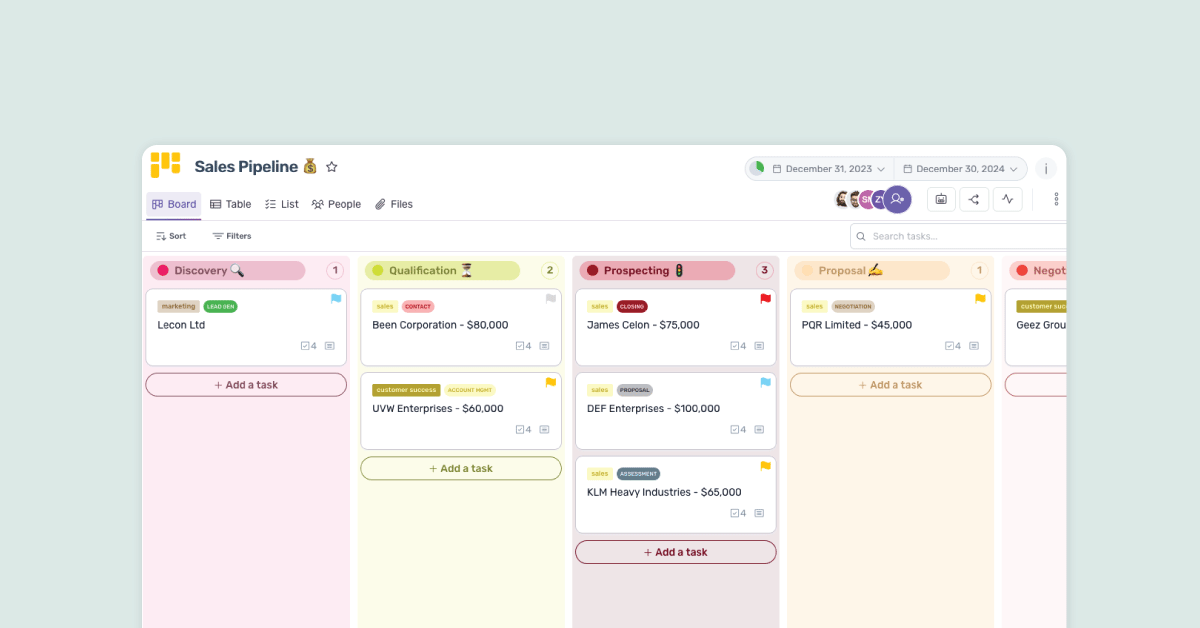Software development plays a crucial role in project management, as it involves the creation and implementation of software to meet specific business needs. To effectively manage software development projects, project managers need to have a deep understanding of the basics of software development, as well as the key stages involved in the process. Additionally, project managers should be familiar with various software development methodologies, understand the role they play in the development process, and utilize essential tools to ensure project success.
Understanding the Basics of Software Development
Before diving into the intricacies of managing software development projects, it is important to have a clear understanding of what software development entails. Software development can be defined as the process of designing, coding, testing, and deploying software applications. It involves a multidisciplinary approach that combines technical skills, problem-solving abilities, and effective communication.
Software development is a complex and dynamic field that has evolved significantly over the years. It encompasses various methodologies, frameworks, and tools that enable developers to create innovative and efficient solutions. From traditional waterfall models to agile methodologies like Scrum and Kanban, software development has adapted to meet the changing needs of businesses and users.
Defining Software Development
In its simplest form, software development refers to the process of creating software applications to address specific needs or problems. It involves translating user requirements into a functional product through a series of stages, which we will discuss further in this guide.
The software development process typically starts with gathering requirements from stakeholders and users. This involves conducting interviews, surveys, and workshops to understand the problem domain and identify the desired features and functionalities. Once the requirements are gathered, they are documented in a software requirements specification (SRS) document, which serves as a blueprint for the development process.
After the requirements are defined, the development team moves on to the design phase. This involves creating architectural and system design documents that outline the structure and components of the software application. The design phase also includes creating user interface (UI) designs and wireframes to visualize the user experience.
Once the design is finalized, the development team starts coding the software application. This involves writing code in programming languages like Java, C++, Python, or JavaScript, depending on the project requirements. The code is then compiled or interpreted to create executable files that can be run on different platforms and devices.
Testing is a crucial part of the software development process. It ensures that the software application meets the specified requirements and functions as intended. Testing can be done at various levels, including unit testing, integration testing, system testing, and acceptance testing. Automated testing tools and frameworks are often used to streamline the testing process and ensure the reliability and quality of the software.
Once the software application passes all the tests, it is ready for deployment. Deployment involves installing the software on servers, cloud platforms, or end-user devices, depending on the deployment strategy. It also includes configuring the software, setting up databases, and ensuring the necessary infrastructure is in place to support the application.
The Importance of Software Development in Project Management
Software development plays a pivotal role in project management, as it enables organizations to improve efficiency, streamline processes, and drive innovation. By developing custom software solutions, project managers can align technology with business goals and deliver tailored solutions that meet specific requirements. This level of customization allows for greater control and flexibility, resulting in improved project success rates.
Effective software development practices can significantly impact project management by enabling better collaboration and communication among team members. Agile methodologies, for example, promote frequent and transparent communication through daily stand-up meetings, sprint reviews, and retrospectives. This helps project managers and team members stay aligned, identify and address issues early on, and make informed decisions throughout the project lifecycle.
Furthermore, software development allows project managers to leverage technology to automate repetitive tasks, streamline workflows, and improve productivity. By developing software applications that automate manual processes, organizations can reduce human error, save time, and allocate resources more efficiently. This not only improves project efficiency but also frees up team members to focus on more strategic and value-added activities.
Software development also enables project managers to stay ahead of the competition by driving innovation and delivering unique solutions. By developing custom software applications, organizations can differentiate themselves from competitors and offer unique features and functionalities that cater to specific user needs. This can lead to increased customer satisfaction, loyalty, and ultimately, business growth.
In conclusion, software development is a critical component of project management that enables organizations to create custom solutions, improve efficiency, and drive innovation. By understanding the basics of software development, project managers can effectively plan, execute, and deliver successful projects that meet the needs of stakeholders and users.
Key Stages of Software Development
The software development process consists of several distinct stages, each crucial to the overall success of the project. Understanding these stages is fundamental to managing software development projects effectively.
Planning and Requirement Analysis
During the planning phase, project managers work closely with stakeholders to identify project goals, objectives, and user requirements. This stage involves conducting a thorough analysis of business needs, user expectations, and technical feasibility. By carefully defining project scope, setting realistic timelines, and selecting appropriate technologies, project managers can lay a solid foundation for successful software development.
During the requirement analysis phase, project managers gather detailed information about the software’s functionality, performance, and usability. They conduct interviews with stakeholders, hold meetings to gather feedback, and analyze existing systems to understand the current state of affairs. This comprehensive approach ensures that all necessary requirements are captured and considered during the development process.
Moreover, project managers also conduct market research to identify any potential competitors or similar software solutions. This helps in understanding the market landscape and making informed decisions about the software’s features and target audience.
Designing the Software
Once the requirements have been established, project managers collaborate with designers and developers to create a detailed software design. This design serves as a blueprint for the development team, outlining the software’s structure, functionality, and user interface. Effective design ensures that the software meets user expectations and aligns with the organization’s overall objectives.
During the design phase, designers create wireframes and prototypes to visualize the software’s user interface and interactions. They consider factors such as usability, accessibility, and responsiveness to ensure a seamless user experience. Additionally, designers also work on creating a visually appealing interface that reflects the organization’s brand identity and enhances user engagement.
Furthermore, project managers also consider the software’s scalability and future enhancements during the design phase. They plan for potential updates and integrations, ensuring that the software can adapt to changing business needs and technological advancements.
Implementation and Coding
In this stage, developers write code based on the software design. Following best practices and industry standards, they transform the design into a functional software application. Project managers play a crucial role in overseeing the development process, ensuring that coding is done efficiently, and codebase quality is maintained. Effective communication between project managers and developers is vital during this stage to address any issues or challenges that may arise.
Developers use programming languages and frameworks to implement the software’s functionality. They follow coding conventions and guidelines to write clean, maintainable, and reusable code. Additionally, they also conduct code reviews and perform unit testing to identify and fix any bugs or errors.
Moreover, project managers also ensure that the development process adheres to project timelines and milestones. They track progress, manage resources, and mitigate any risks that may impact the software’s delivery. Regular meetings and status updates help in maintaining transparency and collaboration within the development team.
Testing the Software
Testing is an integral part of the software development process, aimed at identifying and resolving defects, ensuring software functionality, and improving overall quality. Project managers work closely with testing teams to develop test plans, execute test cases, and track defects. Rigorous testing helps to uncover any issues before deployment, reducing the risk of software failure and customer dissatisfaction.
Testing teams perform various types of testing, including functional testing, performance testing, security testing, and usability testing. They use testing tools and frameworks to simulate real-world scenarios and validate the software’s behavior. Additionally, they also conduct regression testing to ensure that new changes do not impact existing functionality.
Project managers closely monitor the testing process, reviewing test results, and coordinating with developers to address any identified issues. They prioritize bug fixes and ensure that the software meets the required quality standards before moving forward with deployment.
Deployment and Maintenance
Once the software has been thoroughly tested and approved, project managers oversee the deployment process. This involves releasing the software to end-users and providing necessary support during the transition period. Post-deployment, project managers continue to monitor and maintain the software, addressing any issues or updates that may arise.
During the deployment phase, project managers work with system administrators and IT teams to set up the necessary infrastructure and configure the software for production use. They ensure that the deployment process is smooth and that the software is accessible to the intended users.
After deployment, project managers establish mechanisms for collecting user feedback and monitoring the software’s performance. They analyze usage data, track system logs, and conduct periodic maintenance to ensure the software’s optimal functioning. Additionally, they also plan for future updates and enhancements, considering user feedback and evolving business requirements.
Furthermore, project managers also provide ongoing support to end-users, addressing any issues or queries that may arise. They establish communication channels, such as a helpdesk or support ticketing system, to facilitate efficient problem resolution. Regular software updates and bug fixes are released to ensure that the software remains secure, stable, and up-to-date.
Software Development Methodologies
Software development methodologies provide frameworks and guidelines for managing the software development process. Different methodologies have different strengths and weaknesses, and project managers must choose the most appropriate one based on project requirements and organizational constraints.
Waterfall Model
The waterfall model is a traditional sequential approach to software development, where each stage flows logically from one to the next. Project managers using this methodology follow a linear path, allowing for thorough planning and documentation before moving on to the next stage. This model is best suited for projects with well-defined requirements and limited scope for changes.
Agile Methodology
The agile methodology is an iterative and incremental approach to software development, focusing on flexibility, collaboration, and customer satisfaction. It emphasizes adaptive planning, continuous feedback, and regular iterations. Project managers using agile methodologies work closely with cross-functional teams to deliver working software quickly, regularly reviewing and adjusting project priorities based on customer feedback.
Scrum Framework
Scrum is a specific implementation of the agile methodology, centered around a self-organizing team, shorter development iterations (sprints), and incremental product delivery. Project managers using the Scrum framework facilitate daily stand-up meetings, sprint planning sessions, and retrospectives to ensure effective communication and collaboration among team members.
Lean Development
Lean development focuses on eliminating waste, delivering value, and continuously improving the software development process. It emphasizes efficiency, reducing unnecessary steps, and optimizing resources. Project managers using lean development principles seek to deliver maximum value to customers while minimizing waste and inefficiencies.
Role of a Project Manager in Software Development
Project managers play a vital role in ensuring the success of software development projects. They are responsible for overseeing the development process, managing resources, and ensuring effective communication throughout the project lifecycle.
Overseeing the Development Process
Project managers are responsible for monitoring and coordinating the various stages of software development. They ensure that each stage is completed on time, within budget, and meets the quality standards outlined in the project plan. Project managers keep a close eye on progress, identify and mitigate risks, and make necessary adjustments to ensure project success.
Ensuring Effective Communication
Effective communication is key to the success of any software development project. Project managers facilitate communication between stakeholders, development teams, and other project members. They ensure that everyone is on the same page regarding project goals, requirements, and timeline. Project managers also act as a liaison between the development team and stakeholders, providing regular updates and addressing any concerns or issues that may arise.
Risk Management in Software Development
Risks are an inherent part of any software development project. Project managers identify potential risks, analyze their impact, and develop risk mitigation strategies. They implement contingency plans to address unforeseen challenges, ensuring that the project stays on track. By effectively managing risks, project managers minimize the likelihood of project delays, cost overruns, and quality issues.
Essential Tools for Project Managers in Software Development
Project managers rely on various tools to effectively manage software development projects. These tools assist in planning, collaboration, and tracking progress throughout the project lifecycle.
Project Management Software
Project management software provides a centralized platform for managing tasks, tracking progress, and facilitating communication among team members. These tools allow project managers to create project plans, assign tasks, set deadlines, and monitor project status in real-time.
Bug Tracking Tools
Bug tracking tools enable project managers to systematically track and manage software defects. These tools allow teams to log bugs, assign priorities, and track their resolution. Project managers can use this information to prioritize bug fixes and ensure that the software meets quality standards.
Version Control Systems
Version control systems help project managers manage codebase changes and collaborate effectively with development teams. These tools enable multiple developers to work on the same codebase simultaneously, track changes, and merge code seamlessly.
Best Practices for Project Managers in Software Development
To excel in managing software development projects, project managers should adopt certain best practices. These practices can help ensure that projects are delivered on time, within budget, and meet customer expectations.
Setting Clear Goals
Clear, specific, and measurable project goals are essential for success. Project managers should work closely with stakeholders to define project objectives and establish realistic expectations. Clear goals provide a roadmap for the team, enabling them to focus on delivering the desired outcomes.
Regularly Reviewing Progress
Regular progress reviews enable project managers to track project performance, identify any deviations from the plan, and take corrective actions as necessary. By monitoring progress closely, project managers can address issues promptly and ensure that the project remains on track.
Encouraging Team Collaboration
Software development projects require effective collaboration among team members with diverse skill sets. Project managers should foster a collaborative environment that promotes open communication, knowledge-sharing, and teamwork. Encouraging collaboration enables teams to leverage each other’s strengths and align efforts towards achieving project success.
Overcoming Common Challenges in Software Development
Software development projects often face common challenges that project managers must overcome to ensure project success. By addressing these challenges proactively, project managers can minimize risks and maximize the chances of successful delivery.
Dealing with Scope Creep
Scope creep refers to the tendency for project requirements to expand beyond the initial project scope. Project managers need to manage scope changes effectively, ensuring that they align with project goals and objectives. This involves rigorous requirement management, effective change control processes, and clear communication with stakeholders.
Managing Time and Budget Constraints
Time and budget constraints are common challenges in software development projects. Project managers should carefully plan and allocate resources, monitor project progress regularly, and identify any deviations from the schedule or budget. Agile methodologies can be particularly effective in managing these constraints by allowing for flexibility and iterative development.
Ensuring Quality Assurance
Quality assurance is crucial in software development, as it ensures that the software meets specified requirements and performs as expected. Project managers should establish robust quality control processes, conduct regular testing, and involve stakeholders in the validation of the software. By prioritizing quality, project managers can deliver software that meets user expectations and drives customer satisfaction.
Conclusion
Software development is a complex process that requires effective management to ensure project success. Project managers undertaking software development projects need to have a solid understanding of the basics of software development, the key stages involved, and the methodologies available. By utilizing essential tools, adopting best practices, and overcoming common challenges, project managers can navigate the complexities of software development and deliver successful projects that meet organizational goals and user expectations.
Ready to Streamline Your Software Development Projects?
Embark on a journey towards seamless collaboration and heightened productivity with Teamhub, the collaboration platform that’s revolutionizing the way Project teams, People Ops, Marketing, and IT teams work together. Experience the power of having Projects, Documentation, and HR in one intuitive and centralized hub. Join the ranks of thousands of companies enhancing their productivity with Teamhub. Start your free trial today and transform your software development management into a truly collaborative success.










